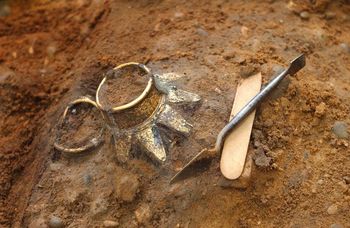Deciding how to archive
Dendrochronological data should be made publicly available wherever possible in order to enable follow-up research and to assist cultural-heritage management. Many data sets are needed to build the chronologies necessary to date archaeological and historical structures, which means that the entire dendrochronological community benefits from the open sharing of data. In addition the ancient world was very interconnected, and often researchers will need the assistance of dendrochronologists working in other regions to accurately date wood samples. Hence it is only by collaboration and effective data sharing that we will get the most from dendrochronology.
There are currently two internationally recognised repositories for tree ring data: the International Tree Ring Data Bank[1] (ITRDB); and the Digital Collaboratory for Cultural Dendrochronology[2] (DCCD).
The ITRDB is hosted by the National Oceanic and Atmospheric Administration (NOAA) in the USA and is primarily aimed at dendrochronological data for climate research although it does also contain archaeologically-sourced dendrochronological data. The repository was set up following an international workshop in 1974 and is structured around the widely used Tucson decadal data format. The ITRDB integrates with a number of other palaeo-climate proxy databases therefore the metadata it stores is rather minimal and generic. The ITRDB does support the submission of additional data files so TRiDaS data should be submitted where possible.
The DCCD is a newer repository launched in 2012 hosted and maintained by Data Archiving and Networked Services[3] (DANS) in the Netherlands. The repository is based on TRiDaS and is primarily aimed at dendrochronological data associated with cultural research including archaeology, architecture, art, etc. While DCCD users are encouraged to make their data publicly available, the repository has the facilities to enable the data provider to control access permissions. This repository is therefore a good choice for users who do not wish – or are unable to make – their data publicly available yet and who meanwhile want to ensure their data is securely managed and maintained in a recognised repository. This procedure ensures that data that is orphaned by the death of researchers or the closure of departments or companies is not lost.
In some circumstance, perhaps for regulatory reasons, data needs to be stored in other designated generic repositories. It should be noted that in such cases the usefulness of the data for follow-up research will likely be limited. Generic repositories are more suited to allow the re-examination or verification of specific dendrochronological analyses, rather than the reanalysis of data in new ways (e.g. regional, national or international syntheses). Even when required to archive data into other designated archives, it is also recommended to submit data to one of the specialist dendrochronological archives described above. If given the option of choosing a generic repository, care should be taken to ensure it is backed by the international EU ‘Data Seal of Approval’ or a similar authority, which indicates the archive is structured and managed according to current best practices. Any dendrochronological data archived in generic repositories should be stored in TRiDaS format files.
[1] International Tree Ring Data Bank (ITRDB) – https://www.ncei.noaa.gov/products/paleoclimatology/tree-ring
[2] Digital Collaboratory for Cultural Dendrochronology (DCCD) – http://dendro.dans.knaw.nl/
[3] Data Archiving and Networked Services (DANS) – http://www.dans.knaw.nl



